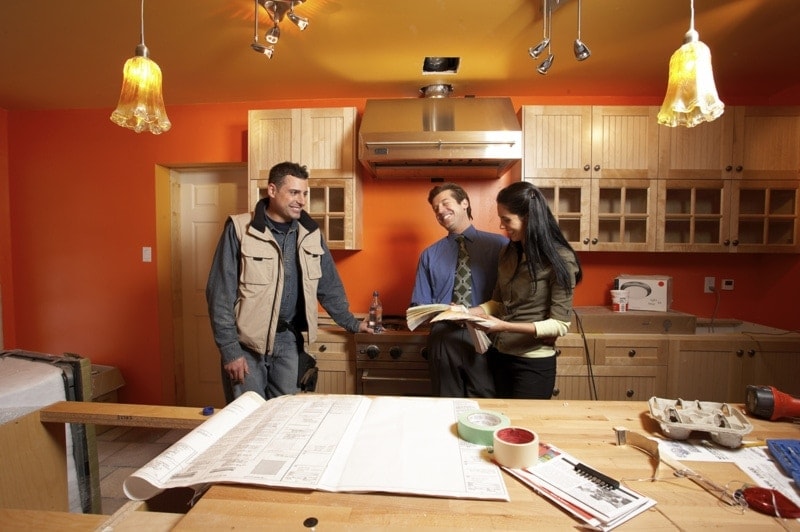
Why is it so difficult to answer this question?
One typical question at the outset of most projects is, “what is the cost of a timber frame?”. For such a simple question, it is filled with a myriad of pitfalls and challenges. So, why it is difficult to give you a hard and fast number? To properly answer the question one would have to answer at least a dozen questions at a minimum. Nonetheless, it is a question that arises more frequently than not, as a result, we are going to try and shed some light on this elusive metric and some tools to help control the numbers as best as possible. To begin, it is always easiest to frame a discussion with a foundation in the familiar. We have assumed that most people have bought a car, so this will serve as our foundation of the familiar!
Let’s take the Ford Motor Company as an example, you start with the Fiesta model, clean lines and simple, then you move up to the Focus, then to the Fusion model, and finally to the Taurus the top model at Ford.
Each one of these car models has different sub-models, the s, the SE and SES and each one has different options and prices. These cars come with a wide variety of options and we all know that the more expensive the car the more bells and whistles.
My point is that buying the timber frame is similar to buying a car as far as the prices are concerned there are so many options at the beginning so makes it hard for us to put an accurate price on a project right off the bat however, we can usually get within 5-10% of the final costs pretty quickly.
From the timber species, the complexity of the floor plan, the location of the project, there are so many variables and different facets to a timber frame. All of which affect the cost. Which by the way is one of the most beautiful things about them because each frame becomes is its own work of art.
We can give you a rough ballpark number within 5-10% based on our average cost for a timber frame during our first conversations, however, we will need to develop some details and more information from you and your plans to give you an accurate number that you can take to the bank.
With all the factors that need to be considered in cost of a timber frame, it is best if the homeowners really explore all their options way ahead of time. This will ensure that they get the best possible house for their money. Next we will give you a resource to help get your budget sorted out.
Timber Frame House Budget Calculator
Getting to the end of the design process for your home and realizing that your timber frame house plan is one that you cannot afford is unfortunately very common and can be devastating for you. To avoid this, we have devised a to help you estimate the cost of your project as you go through the design process. It will start saving you money right off the bat by showing you that you need to cut square footage or revise some of the finishes to meet your desired budget.
Bookmark this page so as you revise your floor plans, come back and re enter your square footage amounts to keep yourself up-to-date of what the costs will be so you can see the real picture. Remember, for this tool to really work, you must be honest about the numbers you enter into the calculator. It is all too easy to make the numbers match what you need them to be and not what they are.
Go to the Preliminary Timber Frame Budget Calculator
How to Guide:
- First, talk to your local builders and contractors and find out the average price per square foot for a custom home in your area. They will want to ask you a few questions to gauge your tastes and location. I have seen the same house built for $155/sq. ft and for $335/sq. ft, and it all depended on the finishes. It will be hard for the timber frame company to give you a good price at the beginning of a project because they don't have all the information they need. Tell them you are working with this calculator and ask for a rough estimate so you have a working number that can be revised over time.
- Second, enter the square footage amounts from your plans and adjust the percentage rate according to the information from your builder. As an example, the basement line has a rate of 50% and assumes a finished basement space in that rate. If you plan to have an unfinished basement that rate would decrease to say 25-30%. You can see that getting good information from your team at the beginning of your project will help you have the best picture of the cost of your project throughout the design process.
- Next, hold your breath and get the estimate. Remember that this is just a starting point for you to start to figure out the cost of your home and does not represent the final working number. After you have completed the design process your contractor and timber frame team can give you an accurate number that you can take to the bank.
5 Factors that Affect the Cost of Building a Timber Frame
Construction projects can be scary, and we’ve all heard about builds-gone-wrong and unexpected mishaps that blow the price through the roof, but there are plenty of steps you can take to ensure this doesn’t happen and that your final price stays manageable. Here are factors that affect the cost of building a timber frame.
1. Timber Frame
The more complex your frame design is, the more it is going to cost. The more joints and board footage of wood in the frame, the more complex things get. I know a few timber frame companies that count the joints in a frame and that’s how they estimate what their cost is going to be. Thus, the more joints, the more time they will have to spend on it. Keeping the frame simple can be challenging if you have a lot of hips and valleys but it is something to keep in the back of your head, as these joints can be the most complex ones to cut.
Timber Frame Extras - If you’re looking to build a complex frame that features beautiful trusses and embellishments, then the price of your home will increase accordingly. On the other hand, you can save money by opting for a home with just four corners as opposed to more, as well as by using fewer timbers. Simplicity saves complexity costs. economical way to keep down your timber frame home cost.
2. Building Location
So you’ve decided to build your own timber frame house, but where? You will have to find the perfect plot of land for your build, and although you might think the cheapest may be the best option, this may result in higher costs down the road. Sometimes cheaper plots mean that builders will have to blast through rock underneath or clear away trees. Things like this can increase your cost much more than you originally anticipated, so be sure you inspect the land before you buy. In order to keep your timber frame home cost manageable, it’s a good idea to pick a plot that has access to public utilities, such as gas, electricity, and water.
Things like site conditions and how remote the locale has a significant impact. For example, northern and southern climate zones have different insulation requirements that vary in cost. And if you’re building in the mountains, you’ll be working with a higher wind load and possible snow load, so the corresponding costs will vary accordingly.
3. Windows
A lot of people don’t realize just how much the size, shape, and style of your windows can impact the overall cost of your timber frame home. If you’re like many who love an abundance of natural light washing over your space, then it’s helpful to know that some very large custom windows may cost you a lot more money than if you opt for a wall full of smaller windows.
4. Floor Plan
Many people want to build an extremely custom home, beginning with a unique floor plan. This can seem appealing, but can also raise the cost of building substantially. It’s often more affordable to choose a basic floor plan that your builder has worked with plenty of times. This way, they’ve most likely perfected their building methods and you will have fewer scrap materials at the end. A rectangular or square style design is also the most
5. Roofline
The simpler your roofline, the less costly are the construction costs. Complicated roofs take more man-hours, building materials and may increase the risk of potential leaks. Those complicated rooflines look fantastic, but they’re going to cost you and are problems just waiting to happen
15 Ways to Reduce the Cost of Building a Timber Frame
Get the most house for your money now and keep planning that dream home. By using these 15 tips to save money building your timber frame home, your cost savings may make that vision happen sooner than you think.
1. Smaller Timber Frame Houses Mean a Lower Cost
Many people are under the impression that timber homes are all about “going big or going home,” but that isn’t the case at all! A lot of people find that they are happier with a slightly smaller floor plan because construction costs less upfront, it saves on utilities, and the saved money can be used to upgrade the interior and splurge on top-notch furnishings.
Do you really need a massive home with extra rooms? Build efficiently, and make use of every square foot in your new home. Be aware of your builder’s plan and make sure no space is going to waste. Also, some timber frame builders charge based on square footage, so only planning for the space you intend to use can reduce costs.
Designing and Furnishing Your Small Timber Frame Home - 10 Good Reasons To Build A Small Timber Frame Home
2. Build Up, Not Out
Chances are you may have heard this one before. It might seem cheaper to build a one-story home that sprawls across the lot instead of building a multi-story home, but it’s actually the opposite. Multiple levels mean a smaller foundation and a smaller roof. These tend to be two of the higher cost variables, and keeping them smaller by building up rather than out can be a great way to lower your timber frame home cost.
A 2,000 square foot ranch and a 2000 square foot two-story colonial have the same living space, but the colonial has a much smaller basement and roof.
3. Aim for an Open Floor Plan
Open floor plans are increasingly popular, and they also have economic value. Open floor plans require fewer walls, which consequently means fewer materials are used. This is a great way to keep your timber frame home cost in check, and many homeowners enjoy the ease of communication from room to room that comes from the open floor plan.
4. Use Quality Materials
When building your home, it can be tempting to opt for cheaper materials to lower the initial cost. This, however, can cost you a lot more in the long run. Choose materials that will stand the test of time, and that won’t need to be replaced in a couple of years. By deciding to build the right way the first time around, you can save yourself a lot of headaches and future costs for your new timber frame home.
5. Think Energy Efficient To Reduce Your Timber Frame Cost
When considering what types of materials and appliances to incorporate into your new home, consider choosing energy-efficient options. Although something like an energy-efficient heating and cooling system may be more expensive at first, it will lower the cost of your utilities throughout the life of your home, and it’s better for our planet.
Also, do not install a HVAC system that’s too small for the size of your home and the region in which you live. You may be saving money upfront, but the system may not maintain your home’s temperature properly. Conversely, don’t think bigger is better. An oversized system will merely cost more to buy and use extra energy every month.
Also, by sealing and insulating your home very well, you’ll reduce the amount you need to spend on HVAC equipment. You’re also permanently reducing your energy bill.
Your Timber Frame Home – Maximizing Its Home Energy Rating
6. Consolidate Plumbing
By placing your kitchen, laundry, and bathrooms in close proximity, you reduce the amount of piping and time required to install your plumbing system. If you can stack bathrooms from floor to floor, that’s a significant saving as well.
7. Patios And Decks For Outdoor Living
A deck or patio is a great way to add additional and affordable living space to your home. With lighting and a roof for inclement weather, this area can become a favorite space for entertaining or a place for the kids to hang out.
How to Design A Deck For Function And Fun - The Front Porch – Bring Family Life Outdoors
8. Use Materials Efficiently
Sheets of plywood, green board, rigid insulation, and drywall all come in standard 4’x8′ sheets. Design your house to make the most of standard-size building materials. Eight-foot ceilings and even-sized wall lengths reduce the use of materials and the number of scraps that go to waste.
9. Install A Factory-Made Fireplace
A zero-clearance, direct vent fireplace can save many thousands of dollars over the cost of a traditional masonry fireplace. You’ll be able to create a beautiful hearth and mantle with some of the savings.
10. Build A Simple Stairway
A straight stair design with no turns or curves will save a lot of money in both time and materials. For extra savings carpet it and use less costly wood.
11. Finish And Upgrade When You Can Afford It
You can opt for less costly items for the time being with the intent of upgrading later on. Builder’s grade faucets, lighting fixtures, knobs, and handles can save you money now and are easily replaced down the road. The basement ceiling and the garage walls can be finished when there’s time and money.
12. Enclosure System
Enclose the roof over the timbered areas with SIPs and use a 2x conventional wall system for the wall enclosure system. Other roofed areas of your home that do not have timbers can also use a more conventional framing approach using 2x trusses and framing. This allows you to take advantage of the ease of using the SIPs and the speed and insulation values they give you on the timbered roof areas while taking advantage of the cost savings of 2x material for the walls and other roof areas.
13. Listen to the pros and get them involved early on
If someone who is a professional suggests you do something to help save you a bunch of money, please listen to them even if it means you have to lose some of the details you really want. Ask them how to save money, as they will often know ways to cut back on the cost of their services or how you can tweak your plan to make things easier.
14. Plan on doing some of the work yourself:
Bottom line is that the biggest expense you will have on your project is labor; so anything that you can do yourself will save you money in the end. Let’s take my timber frame staircase as an example. If I were to have a timber frame company cut and install my staircase it would have been over $12,000. With the actual material costs of $4,200 (I had most of the wood on site drying for this occasion that had been milled up 8 years before, that cost is not included in the price) I ended saving about $7,800.
The one catch is that your time is worth nothing if you take this approach. If you are dealing with a bank or a deadline imposed to you by your significant other, your time starts to be an important factor. In this case hiring folks will be the only way to go to save you money, because the faster you go the less money it will cost you. Finding the balance is the hard part.
15. Find the best pricing for your building materials and contractors:
Both suppliers and contractors prices will vary so getting 3 estimates for everything is the best strategy. If you only get two you will not have the third one to verify if someone is high or low. Make sure you make a good Request for Proposal document to send to everyone. That way you will get true apples to apples bidding.
In the end, just don’t go with the lower price, instead, figure out which one is the best fit for you and your project…the person you can work with. In the end, that will give you the most savings.
16. Use local species of timbers:
If you live on the east coast you will find white pine and oak the least expensive species; and, on the west coast, Douglas fir would be the best choice. Shipping timbers across the country is certainly an added expense that you do not need to add to the bottom line.
Something else to think about is the material handling and cutting of the joinery. Oak is certainly harder and heavier to work with than white pine and that takes more time and money
Keep in mind that this list is just the tip of the iceberg when it comes to building your timber home on a budget. As long as you take note of the suggestions here, spend a little time researching different options, and listen to the advice of other timber home owners and contractors, then you should be able to build a timber home that is well within your budget.
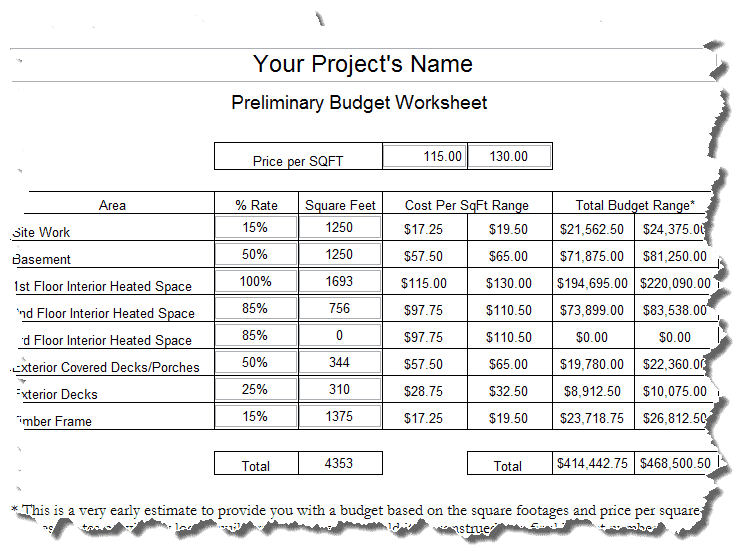

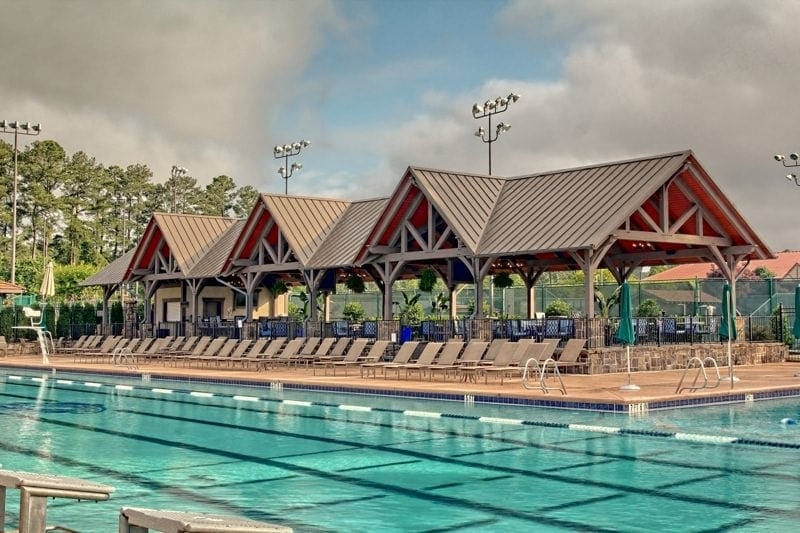
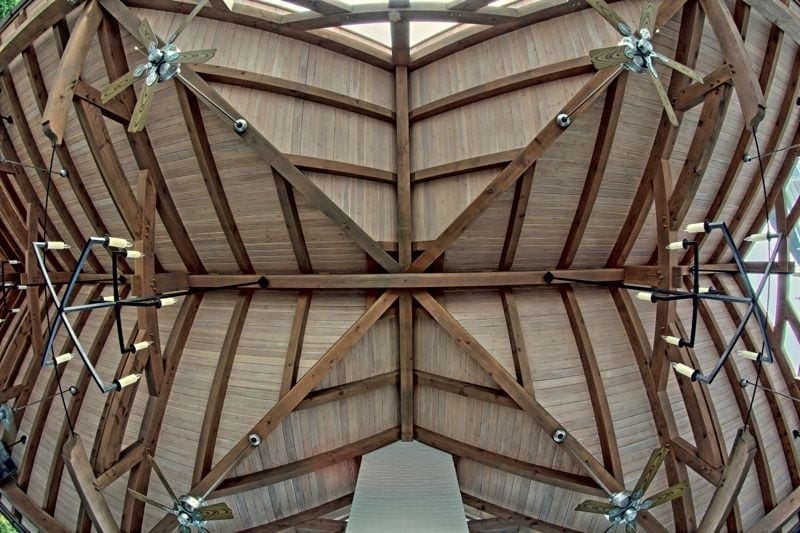
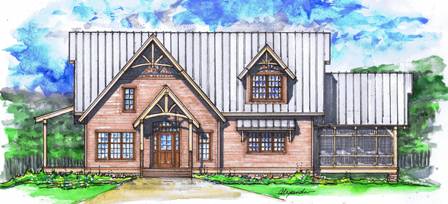
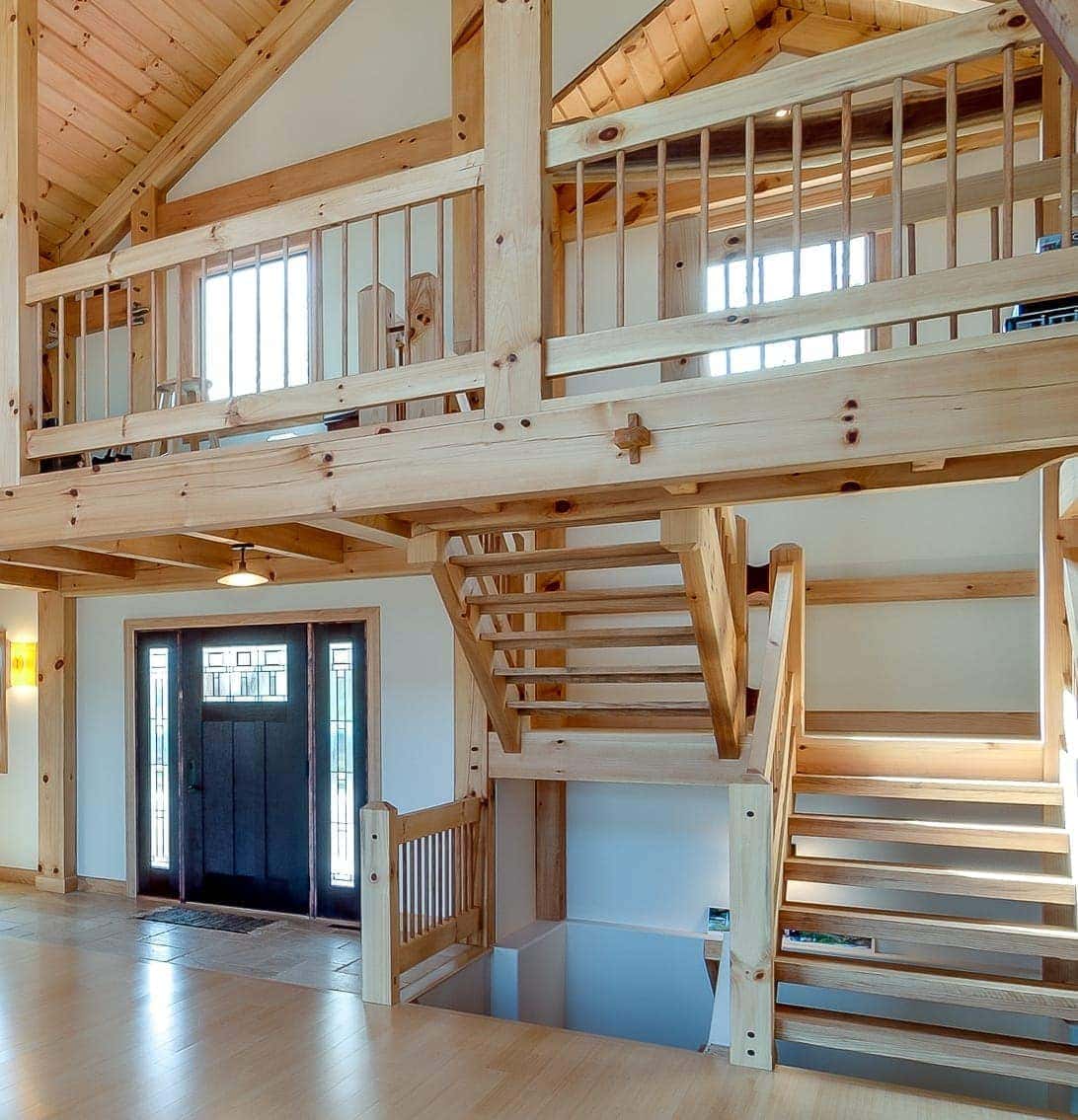
I like how you stated that the size of the house affects the cost of timber framing. My husband and I want to have a timber frame for our house. We’ll have to find an affordable timber supplier.